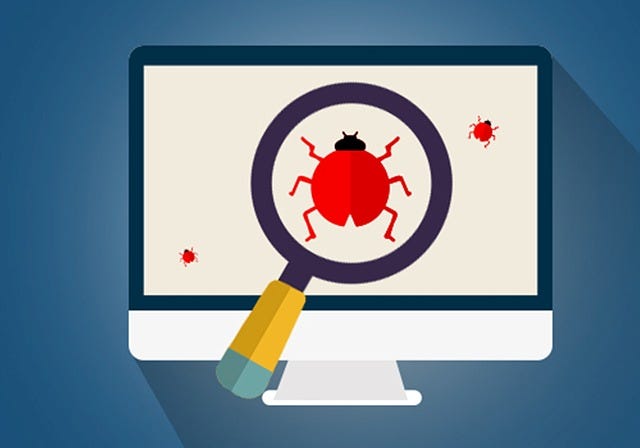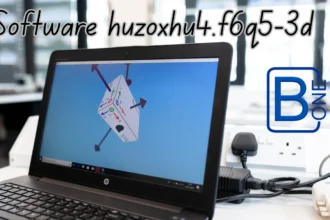Introduction
In the world of automation and digital tools, encountering technical glitches is inevitable—even with robust platforms like huzoxhu4.f6q5-3d. Users from development, data science, and IT backgrounds rely heavily on this software to streamline tasks, manage complex data, and maintain efficient pipelines. However, a recurring bug known as the huzoxhu4.f6q5-3d bug has begun to disrupt workflows and raise concerns.
Whether you’re a developer running continuous deployment, a systems analyst, or a team manager relying on accurate data processing, understanding this bug is critical. This article walks you through the causes, symptoms, and step-by-step solutions to the huzoxhu4.f6q5-3d bug. We’ve collected common user pain points and practical remedies sourced from real user experiences and technical insights. Let’s explore how to fix the huzoxhu4.f6q5-3d bug and restore system stability—fast and effectively.
1. What Is the huzoxhu4.f6q5-3d Bug?
The huzoxhu4.f6q5-3d bug is a technical fault that causes crashes, system freezing, or data mismanagement in the huzoxhu4.f6q5-3d software suite. It’s typically noticed when the system tries to execute automated scripts or perform integrations with third-party platforms.
Common signs include:
- Unexpected app shutdowns
- Slow processing of commands
- Failing integration with CI/CD tools
- Configuration reset after reboot
- Repetitive error codes without clear logs
This issue may seem random, but it typically originates from deep-rooted causes like corrupted configurations, outdated software builds, or system resource conflicts.
2. Why This Bug Happens: Core Causes
Understanding the core reasons behind this bug helps in preventing it in the future. Here are the primary causes:
2.1 Configuration Corruption
Improper initial setup or accidental overwriting of environment variables may result in system misbehavior.
2.2 Incompatible Dependencies
Older versions of system libraries or clashing third-party integrations (e.g., mismatched Python or Java packages) can cause the bug.
2.3 Resource Bottlenecks
Running the software on systems with low memory, insufficient disk space, or outdated CPUs may result in poor performance or software breakdowns.
2.4 Software Version Mismatch
Some users install huzoxhu4.f6q5-3d updates partially or skip patches, leading to internal bugs that have already been resolved in newer builds.
2.5 Unclean Uninstall/Reinstall Attempts
Unsuccessful reinstallation attempts often leave corrupted files behind, causing the system to behave unpredictably.
3. Step-by-Step Fix for huzoxhu4.f6q5-3d Bug
Let’s walk through the practical steps to identify, isolate, and fix the bug:
Step 1: Backup Your Current Configuration
Before doing anything, export your current settings and environment variables. This helps restore your environment if something goes wrong.
Step 2: Perform a Clean Reinstallation
- Uninstall huzoxhu4.f6q5-3d completely.
- Manually delete residual folders and cached files.
- Reboot your system.
- Download the latest stable version.
- Install and configure it from scratch.
Step 3: Validate Dependencies
Ensure your system supports required runtime libraries or frameworks (e.g., .NET, Python, Node.js, Java). Remove outdated ones and install fresh versions.
Step 4: Allocate More System Resources
If possible:
- Increase RAM allocation.
- Clean up disk space.
- Set CPU affinity to prioritize huzoxhu4.f6q5-3d processes.
Step 5: Check Integration Settings
If the bug appears during syncs with GitHub, Jenkins, or third-party apps:
- Review webhook and API keys.
- Validate URL paths.
- Reset tokens if necessary.
Step 6: Test in Sandbox Mode
Enable a test environment or sandbox mode (if available) and run your primary workflow. This helps isolate the bug without harming live systems.
4. Pro Tips for Long-Term Stability
To reduce the chances of encountering this bug again, follow these tips:
- Keep Software Updated: Always install patches and updates promptly.
- Use Virtual Environments: For developers, isolate projects using virtual environments to avoid version conflicts.
- Regular System Health Checks: Automate scans for memory usage, disk space, and CPU spikes.
- Log Everything: Enable verbose logging. In case the bug returns, you’ll have a trail to follow.
- Join User Forums: The huzoxhu4.f6q5-3d community often shares workarounds and config files that help diagnose recurring problems.
5. User Case Example
Problem:
A software engineer reported that their huzoxhu4.f6q5-3d platform would crash every time a GitHub webhook was triggered.
Diagnosis:
Upon inspection, they found:
- An outdated API token.
- A background task using 95% CPU.
- A missing patch from a previous update.
Solution:
- Updated API keys.
- Killed the resource-heavy process.
- Reinstalled the latest software version cleanly.
Result:
The bug disappeared, and the system ran smoothly for weeks.
FOK959S-M Bed Types: Features, Designs & Buying Guide
Conclusion
The huzoxhu4.f6q5-3d bug may seem complex, but with a methodical approach, it can be resolved quickly and efficiently. Whether it stems from integration issues, corrupted files, or outdated components, there are practical steps to fix it. Begin with a clean installation, verify dependencies, and optimize your system. Don’t overlook the power of community knowledge, documentation, and test environments in identifying persistent bugs.
Maintaining regular software updates, isolating environments, and keeping an eye on system performance are key practices that ensure long-term stability. If your system is mission-critical, consider creating restore points before major updates. The more proactive your maintenance, the less time you’ll spend troubleshooting.
Now that you’re equipped with a full understanding of the huzoxhu4.f6q5-3d bug and how to fix it, you’re one step closer to smoother, error-free operations.
FAQs
Q1. What causes the huzoxhu4.f6q5-3d bug to appear?
It’s usually caused by outdated software, corrupted configurations, or low system resources.
Q2. Is huzoxhu4.f6q5-3d safe to use after fixing the bug?
Yes, once fixed and properly configured, it performs reliably.
Q3. How do I know if my bug is related to integration problems?
Check if the bug occurs when syncing with third-party tools like GitHub or Jenkins.
Q4. Can I fix the bug without reinstalling?
Sometimes, yes. Updating dependencies or changing configurations might resolve it—but a clean reinstall is most reliable.
Q5. How do I prevent this bug in the future?
Keep the software updated, maintain proper system health, and use sandbox testing before applying major changes.






